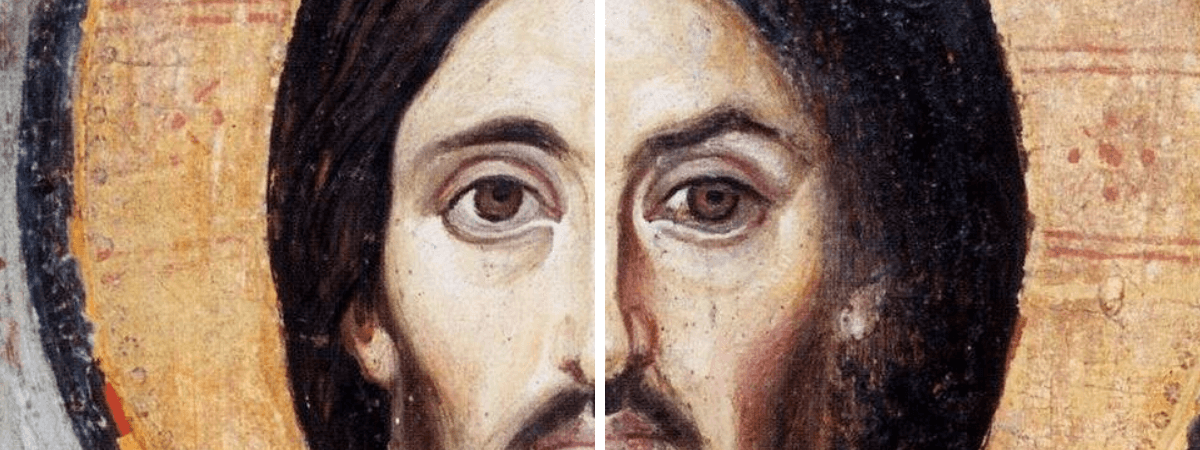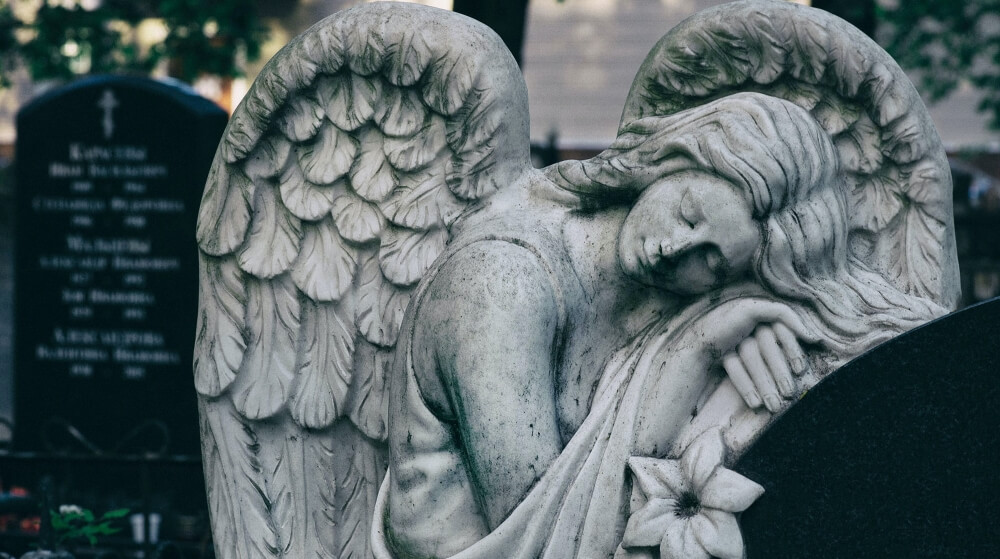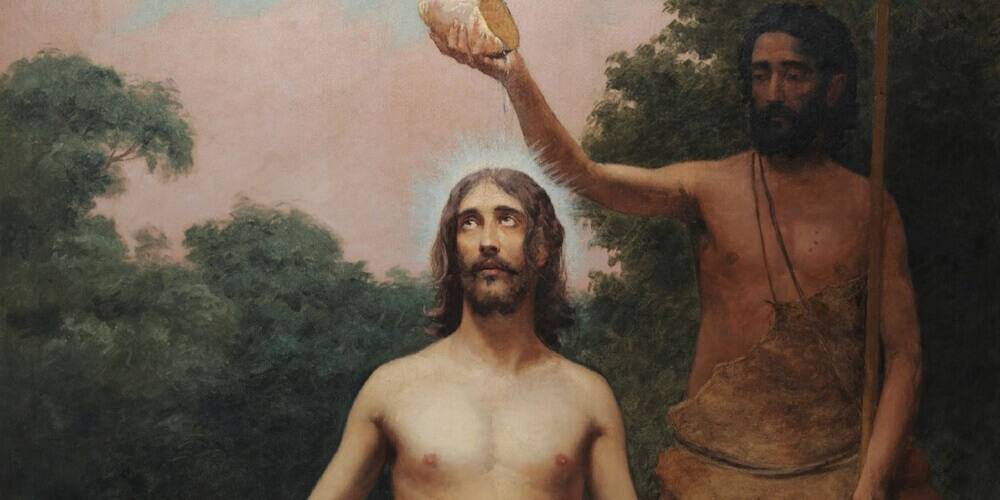
When the Lord Jesus went to the Jordan River to be baptized, St. John the Baptist knew that Jesus did not need baptism.
He was astonished (perhaps even horrified) by Jesus’ request, saying:
“I need to be baptized by you, and do you come to me?”
St. John the Baptist, Matthew 3:14
Our Lord answered him:
“Let it be so now; for thus it is fitting for us to fulfil all righteousness.”
Jesus, Matthew 3:15
“It is fitting to fulfill all righteousness.”
So speaks Jesus, mysteriously.
But…baptism is for sinners. Why would the all-holy Son of God seek to be baptized?
Back to Basics: What Is Baptism, Really?
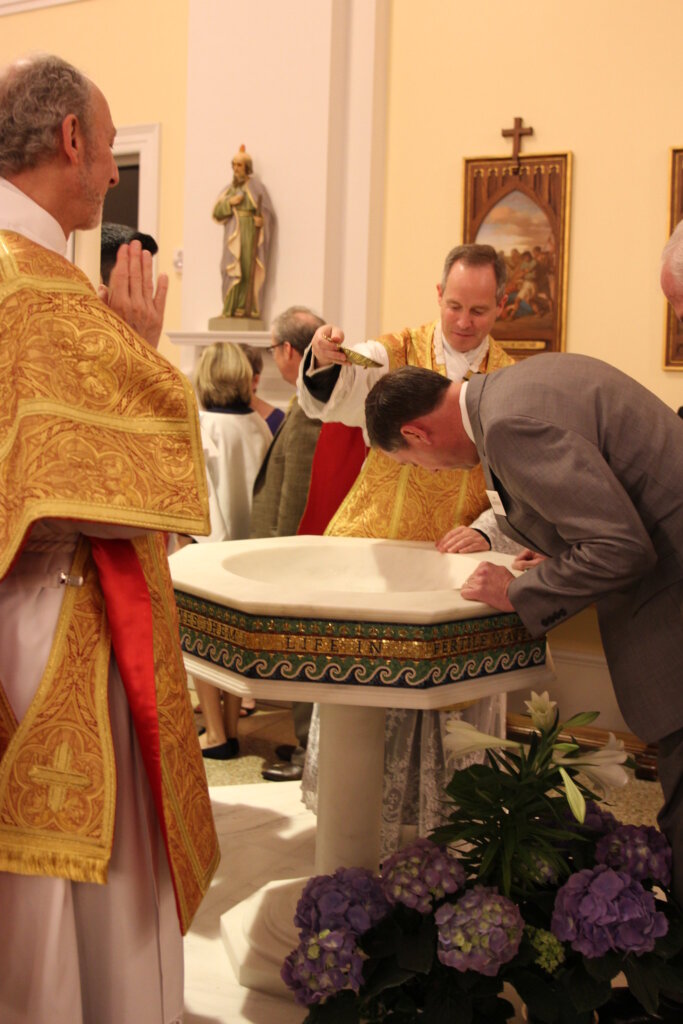
Before answering this important question, let’s review the basics.
What is the sacrament of baptism?
Baptism is:
The Sacrament of regeneration by water in the word.
By nature we are born from Adam children of wrath, but by Baptism we are regenerated in Christ, children of mercy.
For He gave power to men to be made the sons of God, to them that believe in his name, who are born, not of blood, nor of the will of the flesh, nor of the will of man, but of God.
The Catechism of Trent
The Catechism tells us that our baptism unites us with our Lord:
Baptism is the first and chief sacrament of forgiveness of sins because it unites us with Christ, who died for our sins and rose for our justification, so that “we too might walk in newness of life.”
The Catechism of the Catholic Church (977)
Of course Jesus Himself had no need to be regenerated or renewed.
And He IS the Son of God. He didn’t need baptism in order to become a son of God.
So Jesus’ baptism was not the baptism that we receive, we who are sinners and must be reborn and made sons of God.
But everything Jesus did had a purpose. His baptism (which He did not personally need) had a real purpose.
Here are four reasons why—according to various Church Fathers, popes, and theologians—Jesus chose to receive baptism at the hands of John the Baptist.
1. Jesus Associates Himself with Sinners as He Prepares to Shoulder Their Sin.
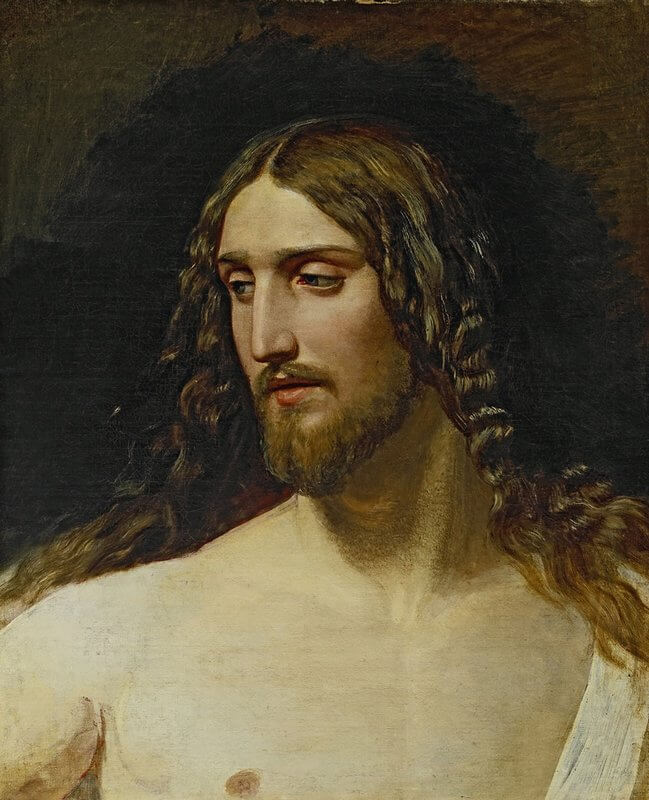
The real novelty is the fact that he—Jesus—wants to be baptized, that he blends into the gray mass of sinners waiting on the banks of the Jordan.
Pope Benedict XVI, Jesus of Nazareth
Jesus, who became man and is like us in all things except for sin (Hebrews 4:15), humbled Himself in order to save us.
That is, He associated Himself with sinners. He willingly carried our unfathomable load of sin and took it to the cross.
Jesus loaded the burden of all mankind’s guilt upon his shoulders; he bore it down into the depths of the Jordan. He inaugurated his public activity by stepping into the place of sinners. His inaugural gesture is an anticipation of the Cross.
Pope Benedict XVI, Jesus of Nazareth
Jesus came to rescue sinners from the otherwise inescapable fate of eternal separation from God.
He came to pay the price that we could not, to bear the bloody lash that represents the innumerable and awful variety of real-life consequences which are the result of our own corrupt choices:
…he was wounded for our transgressions,
Isaiah 53:5
he was bruised for our iniquities;
upon him was the chastisement that made us whole,
and with his stripes we are healed.
Jesus, who knew no sin and yet suffered the effects of sin (cf. 2 Corinthians 5:21), stood in the place of sinners.
We glimpse this when He went to John the Baptist, mingling with a crowd of sinners seeking baptism, sacred-shoulder to sinful-shoulder of wretched mankind.
2. Jesus Sanctified the Waters of the Baptismal Font With His Pure Flesh.
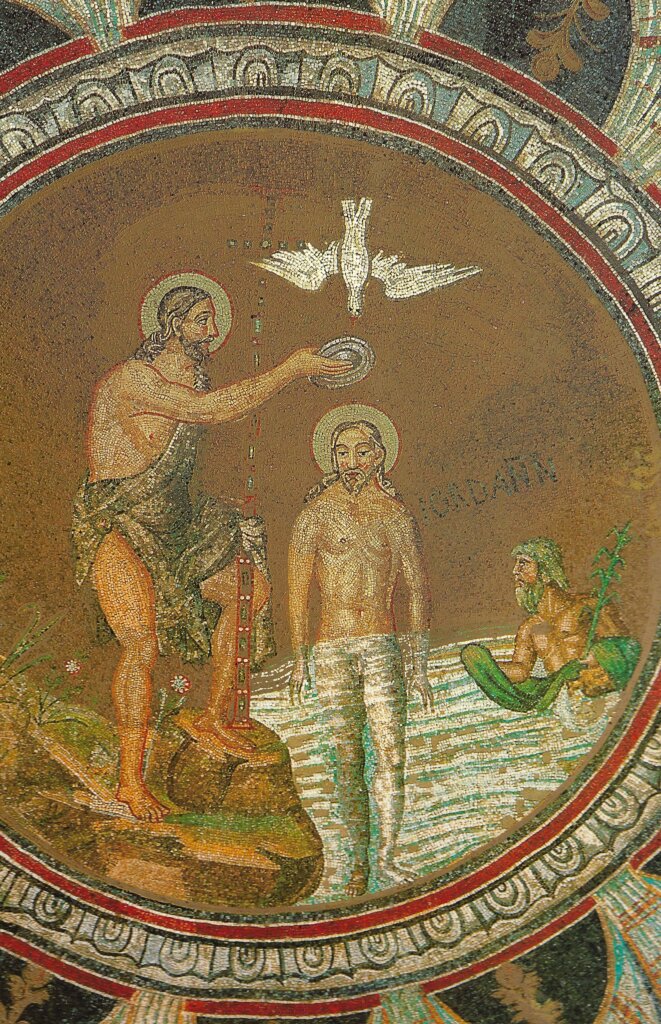
Many of the Church Fathers and great theologians teach a fascinating thing: that Jesus, when He descended into the Jordan and was submerged in it, was sanctifying the baptismal waters that now pour over us as we are held over—or bend over—the font.
Listen to how this is described first, by the Council of Trent, and then by the Church Fathers themselves:
[Baptism] was instituted by our Lord when, having been baptized by John, He gave to water the power of sanctifying…
[W]hen our Lord was baptized, water, by contact with His most holy and pure body, was consecrated to the salutary use of Baptism…
Catechism of the Council of Trent
The Lord is baptized, not because He had need to be cleansed, but in order that, by the contact of His pure flesh, He might purify the waters and impart to them the power of cleansing.
St. Augustine
Our Lord was baptized because He wished, not to be cleansed, but to cleanse the waters, that, being purified by the flesh of Christ that knew no sin, they might have the virtue of baptism.
St. Ambrose (as quoted by St. Thomas Aquinas in his Summa Theologica)
St. John Chrysostom (as quoted by St. Thomas Aquinas in his Summa Theologica)
“[Jesus was baptized ]that He might bequeath the sanctified waters to those who were to be baptized afterwards.”
Now the mysterious scene at the Jordan River has a whole new meaning.
The surface-level confusion is transformed into depths that we can ponder in silent wonder.
3. Jesus’ Baptism Symbolizes His Death and Resurrection.
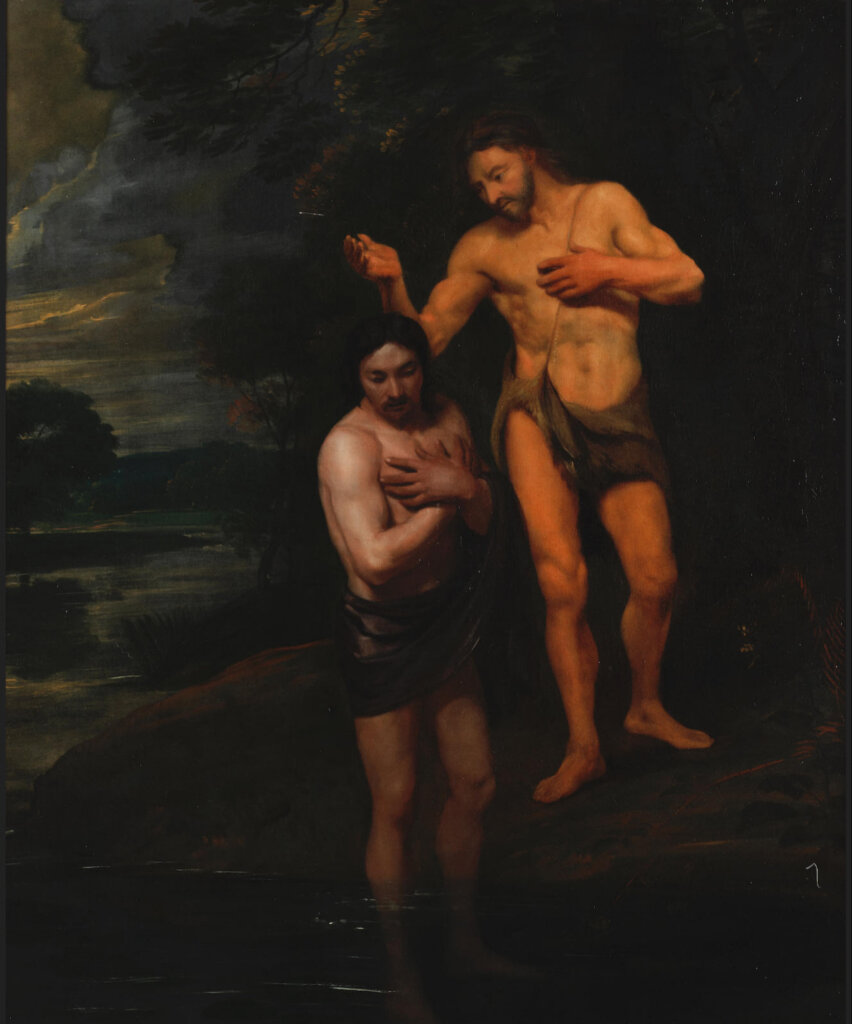
Pope Benedict XVI explains the symbolism of the ritual of baptism.
On one hand, immersion into the waters is a symbol of death, recalling the death and destruction of the flood. On the other hand, the flowing waters of the river Jordan are also, and above all, a symbol of life.
Pope Benedict XVI helps us to understand all of this when he explains that the significance of this event could not fully emerge until it was seen in light of the Cross and Resurrection:
But Jesus said to them, “You do not know what you are asking. Are you able to drink the cup that I drink, or to be baptized with the baptism with which I am baptized?”
Mark 10:38
“I have a baptism to be baptized with; and how I am constrained until it is accomplished!”
Luke 12:50
Pope Benedict XVI helps us put it all together when he describes this as a starting point for our understanding of Christian baptism:
The baptism is an acceptance of death for the sins of humanity, and the voice that calls out “This is my beloved Son” over the baptismal waters is an anticipatory reference to the Resurrection. This also explains why, in his own discourses, Jesus uses the word “baptism” to refer to his death.
Pope Benedict XVI, Jesus of Nazareth
The answer to the question of why Jesus was baptized lies, ultimately, in His passion and death on the cross. The Song of the Suffering Servant in Isaiah compares the suffering servant of God with the lamb that is led to slaughter. The shepherd who became a sheep is the Paschal Lamb.
The reference to the Lamb of God interprets Jesus’ Baptism, his descent into the abyss of death, as a theology of the Cross, if we may so express it. All four Gospels recount in their different ways that, as Jesus came up from the water, heaven was “torn open” that the Spirit came down upon him “like a dove”; and that in the midst of all this a voice from heaven resounded. According to Mark and Luke, the voice addresses Jesus with the words “Thou art …”; according to Matthew, the voice speaks about him in the third person, saying, “This is my beloved Son, with whom I am well pleased”.
Pope Benedict XVI, Jesus of Nazareth
4. Jesus Embarks Upon His Mission to Save Us at His Baptism.
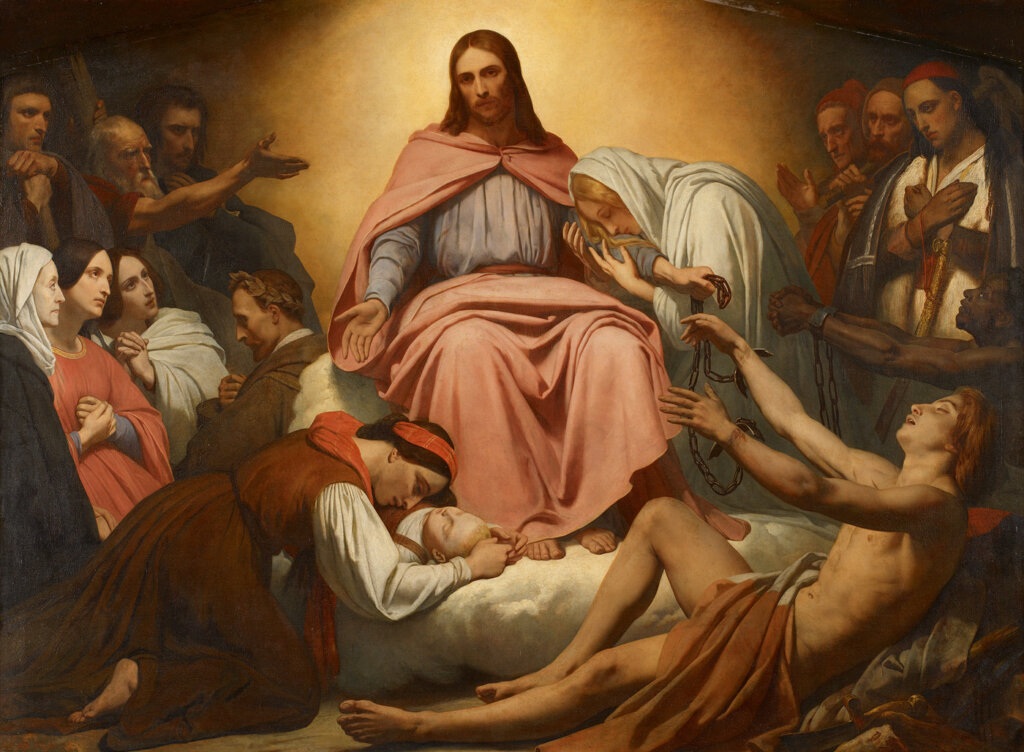
The descent of the Holy Spirit upon Jesus which concludes the baptismal scene is also referred to as the time of the anointing.
The descent of the Holy Spirit upon Jesus, which concludes the baptismal scene, is to be understood as a kind of formal investiture with the messianic office. The Fathers of the Church therefore rightly saw this event as analogous to the anointing by which kings and priests in Israel were installed in office. The words Christ and Messiah mean “the Anointed”: In the Old Testament, anointing was regarded as the visible sign that the person anointed was being invested with the gifts of office, with the Spirit of God…
According to Saint Luke’s account, Jesus presented himself and his mission in the synagogue at Nazareth citing a related passage from Isaiah: “The Spirit of the Lord us upon me, for he has anointed me” (Lk 4:18, cf. Is 6:1).
Pope Benedict XVI, Jesus of Nazareth
As the long-awaited Messiah, the Anointed One, Jesus’ mission leads Him first into the desert “to be tempted by the devil,” and ultimately, as Pope Benedict so aptly puts it…
It’s a descent into the perils of mankind, for there is no other way to lift up the fallen humanity. Jesus has to enter into the drama of human existence, for that belongs to the core of his mission; he has to penetrate it completely, down to its uttermost depth, in order to find the “lost sheep” to bear it on his shoulders, and to bring it home.
Pope Benedict XVI, Jesus of Nazareth
Conclusion

Now we understand why the sinless Son of God, the Second Person of the Most Holy Trinity, was baptized.
Jesus associated Himself with us sinners, taking the unspeakable burden of sin onto His shoulders.
He sanctified the future waters of the baptismal font, enabling us to receive the Sacrament of Baptism and be saved from the eternal fires of hell.
He foreshadowed His death and resurrection, which He embraces on our behalf.
Finally, He formally received His anointing and, with it, His mission.
Through Him, His baptism, and the Paschal mystery, we are rescued from slavery to sin and our dignity is restored.
Everything that happened to Christ lets us know that, after the bath of water, the Holy Spirit swoops down upon us from high heaven and that, adopted by the Father’s voice, we become sons of God.
The Catechism of the Catholic Church, 537
Praised be Jesus Christ, now and forever!
What stands out to you the most regarding Jesus’ baptism and why He received it?
Do you have other questions about Jesus and the events in the Bible that have left you puzzled?
Share your thoughts with us in the comments below!
And one more thing: now is the time to re-discover the works, loves, joys, and sorrows of Jesus so that you can follow Him more closely. If you’ve ever wondered or been confused about anything in Jesus’ life, actions, or words, sign up here for the fascinating program The Life of Christ. You’ll be amazed at what you learn!

